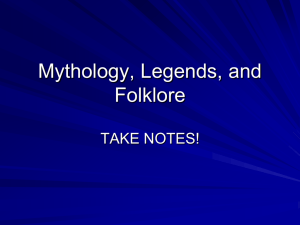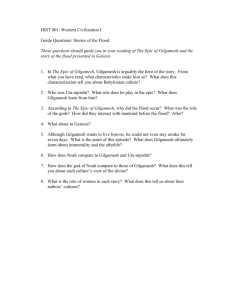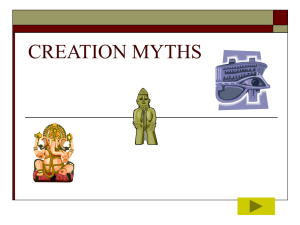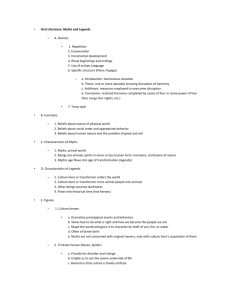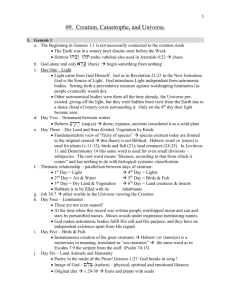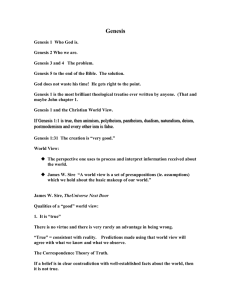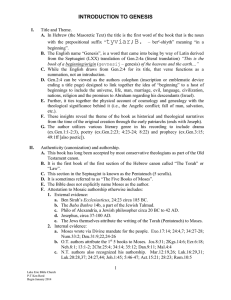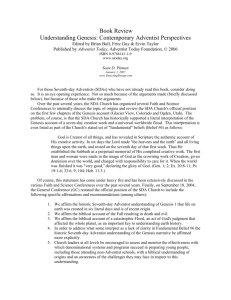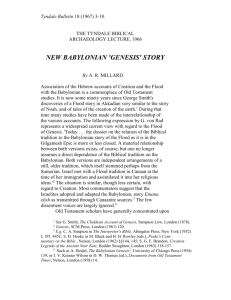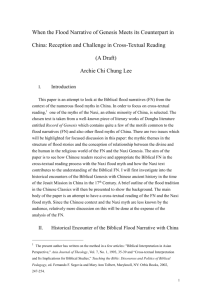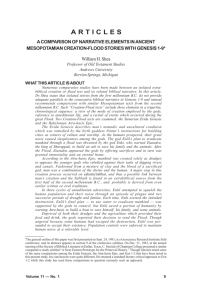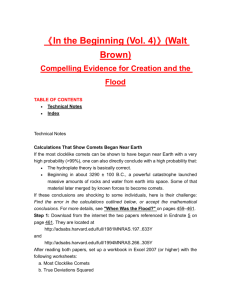Ancient Myths and Legends - Online
advertisement
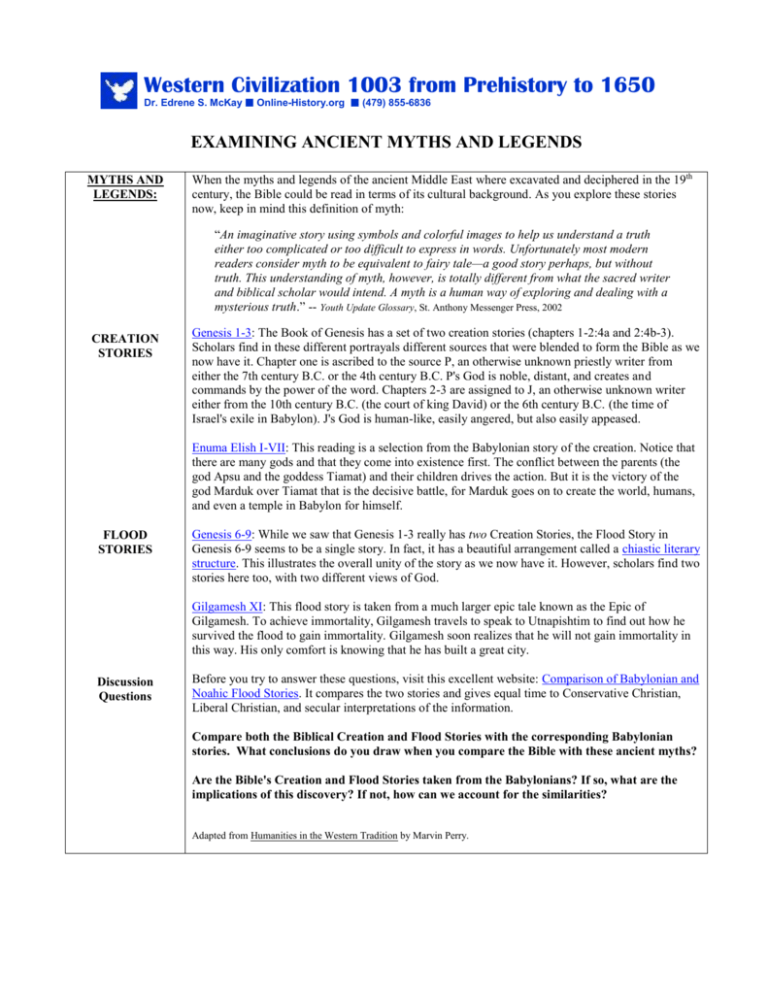
Western Civilization 1003 from Prehistory to 1650 Dr. Edrene S. McKay Online-History.org (479) 855-6836 EXAMINING ANCIENT MYTHS AND LEGENDS MYTHS AND LEGENDS: When the myths and legends of the ancient Middle East where excavated and deciphered in the 19th century, the Bible could be read in terms of its cultural background. As you explore these stories now, keep in mind this definition of myth: “An imaginative story using symbols and colorful images to help us understand a truth either too complicated or too difficult to express in words. Unfortunately most modern readers consider myth to be equivalent to fairy tale—a good story perhaps, but without truth. This understanding of myth, however, is totally different from what the sacred writer and biblical scholar would intend. A myth is a human way of exploring and dealing with a mysterious truth.” -- Youth Update Glossary, St. Anthony Messenger Press, 2002 CREATION STORIES Genesis 1-3: The Book of Genesis has a set of two creation stories (chapters 1-2:4a and 2:4b-3). Scholars find in these different portrayals different sources that were blended to form the Bible as we now have it. Chapter one is ascribed to the source P, an otherwise unknown priestly writer from either the 7th century B.C. or the 4th century B.C. P's God is noble, distant, and creates and commands by the power of the word. Chapters 2-3 are assigned to J, an otherwise unknown writer either from the 10th century B.C. (the court of king David) or the 6th century B.C. (the time of Israel's exile in Babylon). J's God is human-like, easily angered, but also easily appeased. Enuma Elish I-VII: This reading is a selection from the Babylonian story of the creation. Notice that there are many gods and that they come into existence first. The conflict between the parents (the god Apsu and the goddess Tiamat) and their children drives the action. But it is the victory of the god Marduk over Tiamat that is the decisive battle, for Marduk goes on to create the world, humans, and even a temple in Babylon for himself. FLOOD STORIES Genesis 6-9: While we saw that Genesis 1-3 really has two Creation Stories, the Flood Story in Genesis 6-9 seems to be a single story. In fact, it has a beautiful arrangement called a chiastic literary structure. This illustrates the overall unity of the story as we now have it. However, scholars find two stories here too, with two different views of God. Gilgamesh XI: This flood story is taken from a much larger epic tale known as the Epic of Gilgamesh. To achieve immortality, Gilgamesh travels to speak to Utnapishtim to find out how he survived the flood to gain immortality. Gilgamesh soon realizes that he will not gain immortality in this way. His only comfort is knowing that he has built a great city. Discussion Questions Before you try to answer these questions, visit this excellent website: Comparison of Babylonian and Noahic Flood Stories. It compares the two stories and gives equal time to Conservative Christian, Liberal Christian, and secular interpretations of the information. Compare both the Biblical Creation and Flood Stories with the corresponding Babylonian stories. What conclusions do you draw when you compare the Bible with these ancient myths? Are the Bible's Creation and Flood Stories taken from the Babylonians? If so, what are the implications of this discovery? If not, how can we account for the similarities? Adapted from Humanities in the Western Tradition by Marvin Perry.
